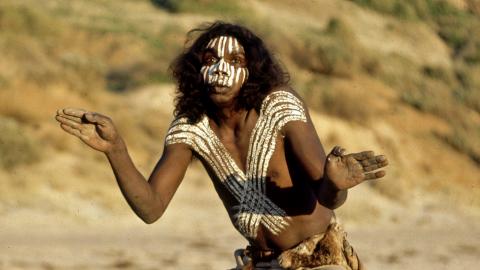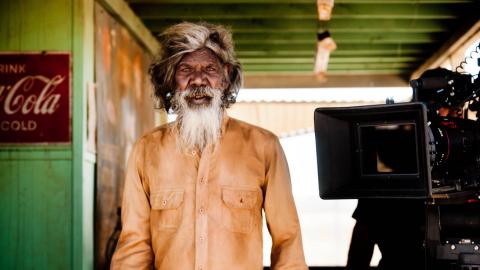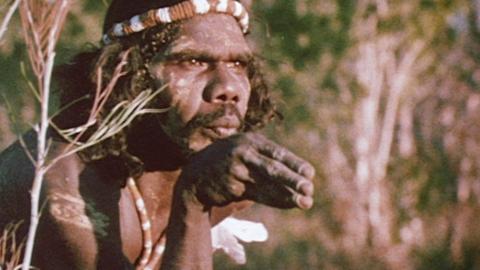
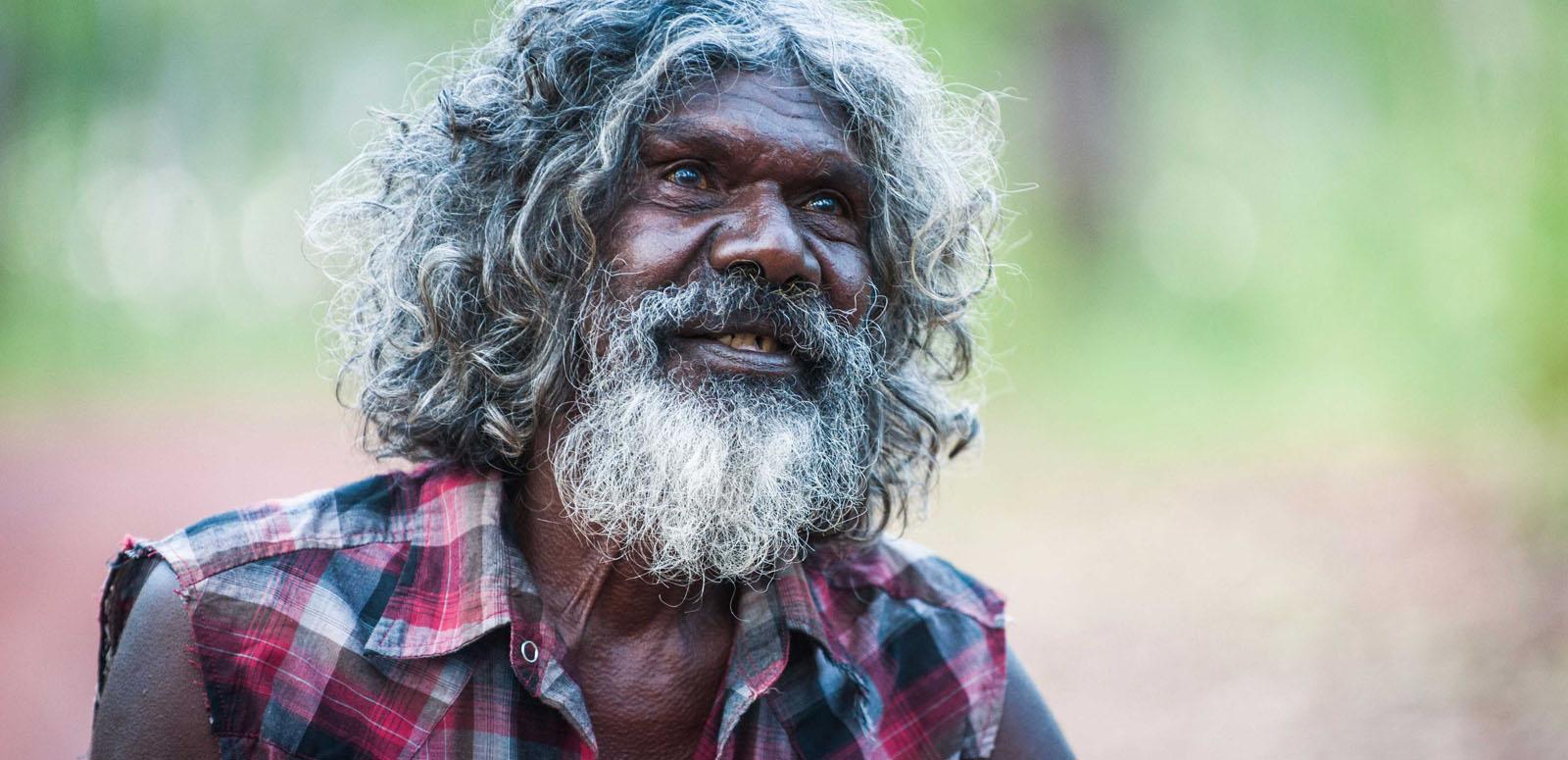
David Gulpilil: Screen legend
David Gulpilil: Screen legend
WARNING: this article contains names, images or voices of deceased Aboriginal and Torres Strait Islander people.
David Gulpilil's talent is awe inspiring. One of Australia's finest actors, he first appeared on screen at the age of 16 in Nicolas Roeg's Walkabout (1970).
We are celebrating his life and work with a curated collection.
Born into the world's oldest continuous culture, he spent his early years completely immersed in the customs and traditions of his peoples, the Yolngu, from Arnhem Land in the Northern Territory. Here he learnt the skills, knowledge and expertise needed to be a custodian of his country and participate in cultural activities and ceremonies. Dance was a key part of this, as well as oral tradition and storytelling. Gulpilil draws upon this rich well of knowledge and spirituality in his screen roles.
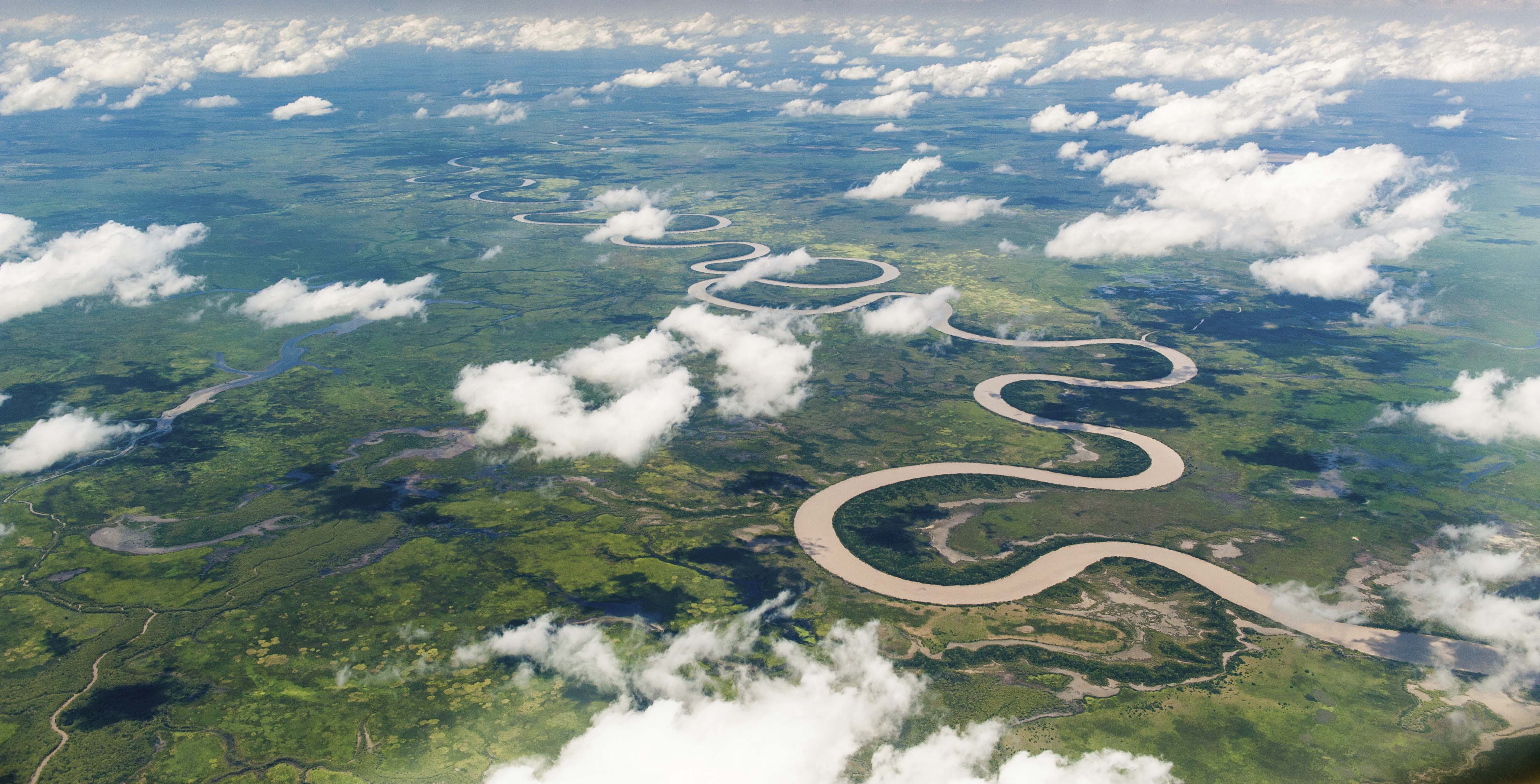
David Gulpilil's country: North East Arnhem Land, courtesy Vertigo Productions. Gulpilil says: 'I live in my land and land lives with me. We live together. This is my home. This land and me … together. I belong here.'
In a career spanning over 50 years Gulpilil has worked with many great actors and directors, from actor Dennis Hopper in Mad Dog Morgan (1976, Philippe Mora) to directors Peter Weir (The Last Wave, 1977), Rolf de Heer (The Tracker, 2002; Ten Canoes, 2006; Charlie's Country, 2014) and Phillip Noyce (Rabbit Proof Fence, 2002). You can see actor Jack Thompson and Peter Weir paying tribute to Gulpilil in an episode of This Is Your Life in the curated collection.
One of the reasons for Gulpilil's global recognition and appeal is the sense of humour which he weaves into his characters with deft playfulness. Think of the brotherly bond Fingerbone Bill forms with Storm Boy (Greg Rowe) in Storm Boy (1976, Henri Safran). Or this scene from Crocodile Dundee (1986, Peter Faiman) when Gulpilil's Neville Bell tells Sue Charlton (Linda Kozlowski) why she can't take his photograph:
Mick Dundee (Paul Hogan) and Neville Bell (David Gulpilil) in Crocodile Dundee (Peter Faiman, Australia, 1986).
He has left a lasting legacy on Australian cinema and its portrayal of Indigenous people. Liz McNiven says in her portrait of Gulpilil, 'He has brought the realism of ethnography into his portrayal of Aboriginality, replacing earlier derogatory and degrading representations of his people within Australian feature films. His presence also ended the reign of non-Aboriginal actors playing Aboriginal character roles.'
You can view clips from some of Gulpilil's many acting roles in the collection and see him performing as an actor, dancer, storyteller and musician. You can also learn about his early life, how he got the name David and hear his amazing kookaburra call.
Explore the David Gulpilil curated collection.
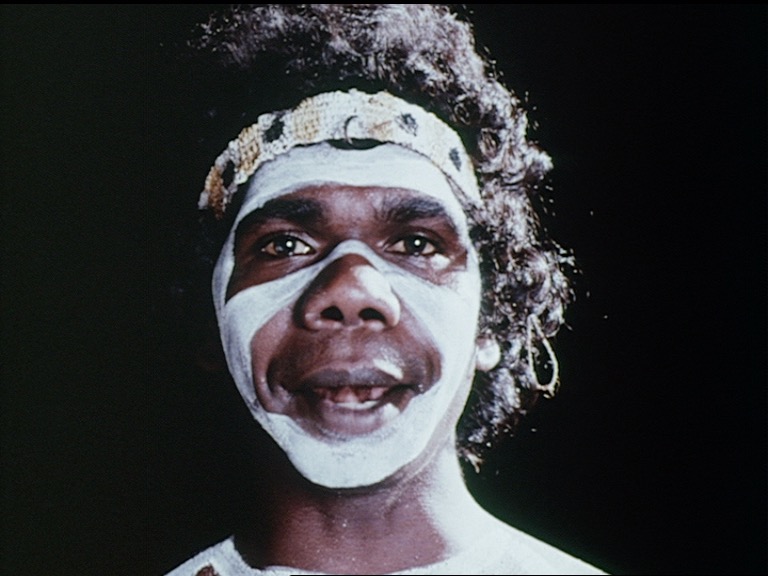
I want to do something not only for me but I’m doing it for Australia and for my people and for our culture.
Main image: David Gulpilil in Charlie's Country (2014), courtesy Vertigo Productions
The National Film and Sound Archive of Australia acknowledges Australia’s Aboriginal and Torres Strait Islander peoples as the Traditional Custodians of the land on which we work and live and gives respect to their Elders both past and present.
